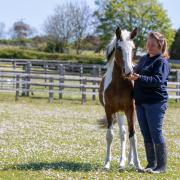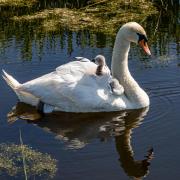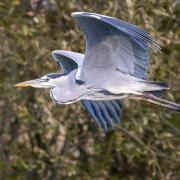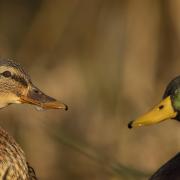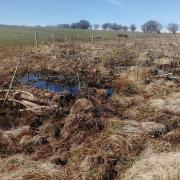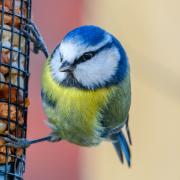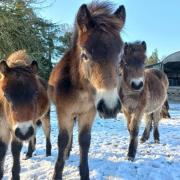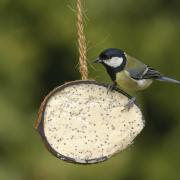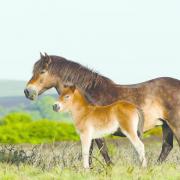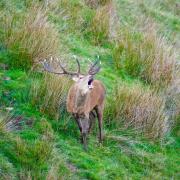Wildlife photographer Michael Taylor tells us how the great crested grebe was saved from extinction and can now be seen on Somerset reserves

Among the largest of the grebe family, the Great Crested Grebe (Podiceps cristatus), is also a candidate for the most attractive. This attribute becomes even more apparent during the breeding season - March through to August, when their beautiful display plumage is at its best.
Alas, in the 19th century it was hunted almost to extinction within the UK, precisely because of its plumage. Victorian fashion was frequently adorned with the bird’s feathers, particularly on ladies’ hats. Such was the demand for stylish headwear - especially among more affluent people, the slaughter of the species continued until by 1860 it was estimated that only 50 or so pairs remained, taking the UK population dangerously close to the brink of extinction.
Fortunately in 1889, a group of women decided to form an action group in order to protest against the massacre of birds purely for fashion. Within a year the group’s membership had grown to more than 5000 members.
During 1904 the group renamed itself, becoming what is known today as the Royal Society for the Protection of Birds (RSPB). Eventually, Parliament introduced laws banning the use of plumage in clothing, thus allowing great crested grebe numbers to slowly recover.
It’s estimated that some 12,000 breeding pairs now reside in the UK, with Somerset being home to a fair share of the population. They can be found on various stretches of water that have a suitable food source - consisting mainly of small fish, such as lakes, reservoirs, rivers and canals. One of the best places to see these elegant birds is in the south of the county at the Chard reservoir nature reserve. The reserve is owned and managed by the district council and it’s a real haven for birdwatchers.
Other places of note in Somerset where great crested grebes can be seen are the RSPB reserves of Ham Wall, situated close to Glastonbury, and Greylake, which is located near to Bridgwater.
Great crested grebes are predominantly aquatic birds. They’re very much at home either on the water’s surface, or submerged, where they swim with great skill to catch prey. On land however, it’s a different matter; their webbed feet are positioned well back on an elongated body, and, as a result, walking resembles a somewhat clumsy action, compared to their graceful movements in water.
Pairs match up during winter in preparation for the breeding season. They strengthen their bond by performing an elaborate courtship ritual. Beginning on the water’s surface and facing each other, the couple turn and then shake their heads in an almost synchronised motion. The routine continues until suddenly the pair dive together, surfacing with weed in their beaks which they seem to offer each other as they rise up from the water, breast to breast, to complete the display.
The nest is built by the male and female, and usually consists of vegetation on branches protruding from the water, or alternatively as a floating construction made from weeds and other plants. Both adults take turns to incubate the eggs as each is laid, the number of which varies between two and six, although a clutch of four tends to be the norm. Some 28 days later eggs begin to hatch, usually in the order they were laid. Newborn chicks have a black and white striped appearance, which disappears on reaching adulthood. From the safety of the parent’s back, it’s quite common for earlier hatchlings to watch their siblings hatch, and then struggle to join them.
Once all of the eggs have hatched, the brood is split between the parents, each carrying chicks on their backs for the first two to three weeks. For the wildlife enthusiast, the first sight of a chick’s head peering from the sanctuary of its mother’s or father’s feathers, is an unforgettable occasion. The parents feed their young for around eight weeks, until they begin to fend for themselves, but it’s not unusual for assisted feeding to continue for another few weeks or so. The young finally fledge and become independent, when they’re about 10-11 weeks old. Great crested grebes often have two broods during their breeding season.
For more information on where to see these beautiful birds in Somerset, visit: somersetwildlife.org or rspb.org
Did you know?
They’re expert divers, and usually dive rather than fly to escape danger.
When diving underwater for prey, they propel themselves by their feet alone.
Shortly after chicks have hatched, parents sometimes feed small feathers to them. It’s thought this helps them form pellets, so they can regurgitate indigestible food.
The zebra-striped chicks are capable of swimming and diving almost on hatching. However, they tend to stay on their parent’s back when very young in order to avoid predation from beneath the water, in the main from pike.
Since official protection measures were introduced, the resulting increase in numbers, makes it one of the most successful wildlife conservation projects ever undertaken in the UK.






